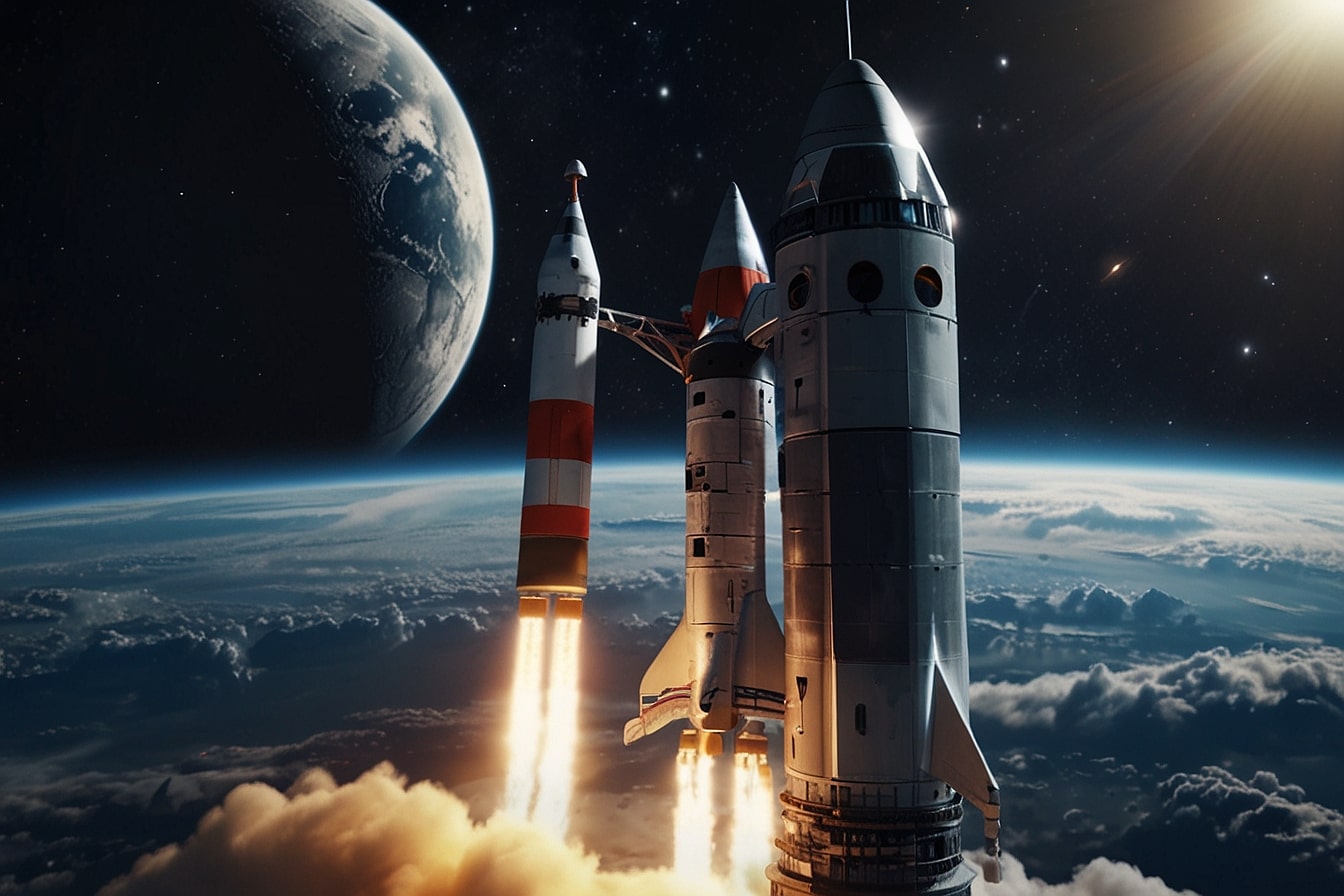
25 interesting facts about Space Race
- 👁️ 294
The Space Race, a mid-20th-century competition between the Soviet Union (USSR) and the United States (USA) for supremacy in space exploration, stands as a monumental period in human history. This intense Cold War rivalry led to significant advancements in rocket technology, satellite communications, and, ultimately, human spaceflight. The competition began in earnest in 1957 with the launch of Sputnik by the Soviet Union and culminated in the dramatic US Apollo moon landings of 1969. The Space Race not only pushed the boundaries of human potential but also sparked a global interest in science, technology, and the vast unknowns of space. Let’s explore some interesting and informative facts about the Space Race that highlight its impact and legacy.
- The Space Race officially began on October 4, 1957, with the launch of Sputnik 1, the world’s first artificial satellite, by the Soviet Union.
- Sputnik 1’s launch prompted the United States to accelerate its own space and missile programs, leading to the creation of NASA in 1958.
- Yuri Gagarin, a Soviet cosmonaut, became the first human in space on April 12, 1961, aboard Vostok 1.
- The United States’ first successful satellite, Explorer 1, was launched on January 31, 1958, discovering the Van Allen radiation belts.
- The Apollo 11 mission, which landed Neil Armstrong and Buzz Aldrin on the Moon on July 20, 1969, marked a significant victory for the US in the Space Race.
- The first woman in space was Soviet cosmonaut Valentina Tereshkova, who orbited Earth aboard Vostok 6 on June 16, 1963.
- The Space Race led to the development of the Intercontinental Ballistic Missile (ICBM) technology by both the Soviet Union and the United States.
- The term “Space Race” was first used in a New York Times article on August 4, 1955, predating the actual launch of satellites and manned spaceflight.
- President John F. Kennedy’s famous speech to Congress on May 25, 1961, set the ambitious goal “before this decade is out, of landing a man on the Moon and returning him safely to the Earth.”
- The Saturn V rocket, developed by NASA for the Apollo program, remains the most powerful rocket ever built.
- The Soviet Union’s Luna program achieved the first human-made object to reach the Moon with Luna 2 in 1959 and the first unmanned spacecraft to land on the Moon with Luna 9 in 1966.
- The space dog Laika, aboard Sputnik 2 in 1957, became the first animal to orbit the Earth, though she did not survive the mission.
- The Apollo-Soyuz Test Project in 1975, where a US Apollo spacecraft docked with a Soviet Soyuz spacecraft, symbolized the end of the Space Race and the beginning of cooperative space missions.
- Both superpowers spent enormous sums on their space programs, with the United States spending over $25 billion on the Apollo program alone.
- The Hubble Space Telescope, launched in 1990, can trace part of its technological and scientific heritage to advancements made during the Space Race.
- The Space Race spurred significant developments in materials science, leading to new alloys and composite materials that could withstand the harsh conditions of space.
- The term “astronaut” comes from the Greek words for “star” and “sailor,” while “cosmonaut” comes from the Greek for “universe” and “sailor.”
- The first spacewalk was conducted by Soviet cosmonaut Alexei Leonov on March 18, 1965, lasting 12 minutes and 9 seconds.
- During the Space Race, the United Nations established the Committee on the Peaceful Uses of Outer Space in 1959 to govern the exploration and use of space for the benefit of all humanity.
- The “Outer Space Treaty,” which entered into force in 1967, was a direct result of international discussions about space exploration during the Space Race.
- The Soviet Union’s Zond 5 mission in 1968 sent the first living organisms, including tortoises, around the Moon and back to Earth.
- NASA’s Gemini program, which ran from 1961 to 1966, developed spaceflight techniques crucial for the Apollo Moon missions, including space docking and extra-vehicular activity.
- The Mercury project was NASA’s first human spaceflight program, putting the first American, Alan Shepard, into space in 1961.
- The Vostok program’s Vostok 1 spacecraft, which carried Yuri Gagarin into space, was a spherical capsule with a single porthole.
- Despite the competitive nature of the Space Race, it laid the groundwork for international cooperation in space exploration, such as the International Space Station.
The Space Race not only demonstrated human ingenuity and the desire to explore beyond our planet but also highlighted the possibilities of peaceful collaboration in the pursuit of knowledge. The advancements made during this period revolutionized our understanding of space and led to technologies that benefit society in countless ways. As we look back on this pivotal chapter in history, we are reminded of our potential when we dare to dream big and work together. The legacy of the Space Race continues to inspire new generations to reach for the stars and beyond.
The Space Race, a mid-20th-century competition between the Soviet Union (USSR) and the United States (USA) for supremacy in space exploration, stands as a monumental period in human history. This intense Cold War rivalry led to significant advancements in rocket technology, satellite communications, and, ultimately, human spaceflight. The competition began…